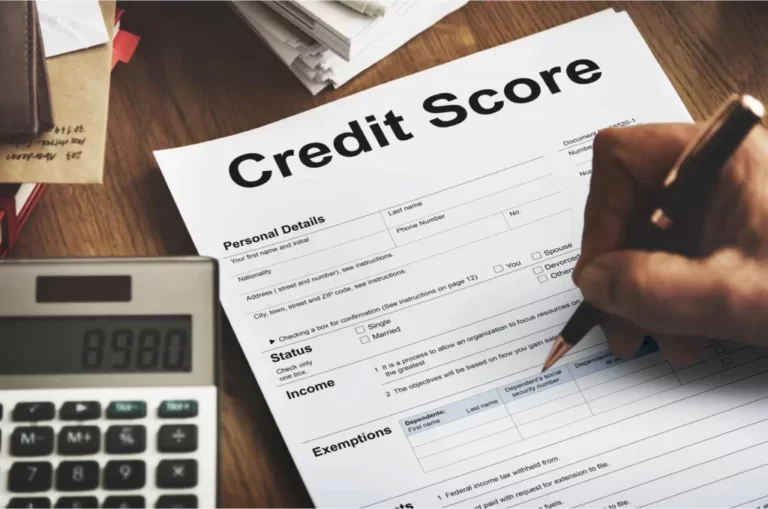The statute of limitations refers to a legally defined period within which a party must initiate legal proceedings, typically in the form of filing a lawsuit or bringing charges against another party for a specific offense or claim. This temporal limitation is imposed by law to ensure the timely pursuit of legal actions, promote judicial efficiency, and safeguard defendants from undue prejudice resulting from the potential loss of evidence or fading memories over time.
Once the statute of limitations expires, the affected party loses the right to pursue legal remedies for the specified matter, and the opposing party may invoke the statute as a defense to bar the untimely claim or action. The duration of the statute of limitations varies depending on the nature of the legal claim or offense, and its commencement is often triggered by the occurrence of the alleged wrongdoing or the discovery of the harm incurred.
The statute of limitations on debt in NC is critical to understand if you’re dealing with old debts.
3 Year Statute Of Limitations On Most Debts In North Carolina
In the legal landscape of North Carolina, debts have a shelf life, and it’s set at three years. This means that creditors, the entities to whom you owe money, have a specific time frame to initiate legal proceedings against you for unpaid debts. If a debt is past the statute of limitations on debt in NC, creditors cannot legally sue you for repayment.
Understanding The Timeframe
The clock on this statute of limitations typically starts ticking from the date of the last activity on the debt. Whether it’s a missed payment or the last acknowledgment of the debt, this marks the beginning of the countdown. So, if you missed a credit card payment in 2021, the three-year window would commence from that point onward.
Example Scenario: Credit Card Debt
The statute of limitations on debt in NC can affect your credit score, even if the debt is no longer legally enforceable.
Let’s say you incurred credit card debt in 2021 and, due to financial challenges, couldn’t make payments after 2022. Fast forward to 2025, and the creditor is contemplating legal action. However, if the statute of limitations in North Carolina is three years, that legal avenue might be closed. The creditor’s ability to sue you for that debt would likely be time-barred.
Importance Of Awareness
Being aware of this time limitation is crucial for both debtors and creditors. For debtors, it provides a certain level of protection after the statute of limitations period has passed. For creditors, it underscores the importance of timely legal action if they wish to pursue unpaid debts.
Potential Pitfall: Making A Payment
It’s important to note that making even a small payment on an old debt can reset the statute of limitations clock. Inadvertently acknowledging the debt through a payment could restart the countdown, potentially exposing you to legal action once again.
Navigating The Three-Year Window
Understanding the ins and outs of this three-year window empowers individuals facing financial challenges. It serves as a guidepost, indicating when a particular debt might no longer be legally enforceable. However, it’s crucial to consult with legal professionals for specific advice tailored to individual situations.
Statute Of Limitations On Debt Collections Vary By State
Understanding the North Carolina statute of limitations on debt collection can help you protect your rights.
One crucial aspect to grasp is that statutes of limitations are not uniform across the United States. They vary from state to state. What might be fair game in North Carolina with its three-year rule might be off-limits in a neighboring state with a four-year rule. It’s like each state has its own set of rules in this legal game.
Example: If you moved from North Carolina to Virginia, the statute of limitations on your debts could change, affecting how long creditors can legally pursue you.
How Statutes Of Limitations Work?
Statutes of limitations play a crucial role in the legal system by establishing time limits within which individuals must initiate legal actions. These time constraints are designed to balance the interests of both plaintiffs and defendants, promoting fairness, judicial efficiency, and the timely resolution of legal disputes.
Pro Tip: Document Everything – Keeping detailed records of your interactions with creditors is like creating a legal paper trail that could be your lifeline if legal trouble arises.
Here’s an in-depth exploration of how statutes of limitations work:-
Purpose and Rationale
(a) Fairness and Legal Certainty:
Statutes of limitations promote fairness by preventing the pursuit of stale claims. This ensures that legal actions are based on relatively recent events, allowing defendants to mount a defense while evidence is still available and witnesses’ memories are fresh.
(b) Legal Certainty:
Establishing time limits provides a level of legal certainty, allowing individuals and businesses to plan and conduct their affairs without the perpetual threat of potential legal action from past events.
Types Of Claims:
Many people are unaware that the NC statute of limitations debt can vary depending on the type of agreement.
(a) Civil Claims: Statutes of limitations apply to various civil claims, including contract disputes, personal injury cases, property damage claims, and more. The time limits can vary based on the nature of the claim and jurisdiction.
(b) Criminal Offenses: Criminal statutes of limitations dictate the timeframe within which prosecutors must file charges for a specific crime. Serious offenses, such as murder, often have no statute of limitations, while less severe crimes may have shorter limitations.
Commencement Of The Statute:
Accrual of the cause of action: The statute of limitations typically begins to run from the time the cause of action accrues, i.e., when the plaintiff becomes aware of the injury, damage, or legal harm. In some cases, it may be triggered by the occurrence of the wrongful act itself.
Tolling and Extensions:
(a) Tolling: Certain circumstances may temporarily suspend or “toll” the running of the statute of limitations. Common tolling scenarios include the plaintiff’s minority (if the individual is a minor), the defendant’s absence from the jurisdiction, or the concealment of the injury by the defendant.
(b) Extensions: Some jurisdictions allow for extensions of the statute of limitations under specific conditions, such as the discovery of fraud or newly available evidence.
Exceptions and Special Circumstances:
(a) Fraud or Concealment: In cases where the defendant fraudulently conceals information relevant to the plaintiff’s claim, the statute of limitations may be extended. The statute of limitations on debt in NC might be extended if the contract is signed under seal.
(b) Continuous Violations: For certain ongoing or repetitive wrongs, the statute of limitations might be extended, with each instance considered a new cause of action.
Waiver and Estoppel:
(a) Waiver: Parties may sometimes explicitly waive the statute of limitations through contractual agreements or other legal mechanisms.
(b) Estoppel: If a defendant’s actions lead the plaintiff to delay filing a lawsuit, the doctrine of estoppel may prevent the defendant from asserting the statute of limitations as a defense.
Effect On Legal Remedies:
Bar To Recovery: Once the statute of limitations expires, the affected party loses the right to pursue legal remedies for the specific matter, and the defendant can raise the expiration as a defense to bar the untimely claim.
Jurisdictional Variances:
Differing Laws: Statutes of limitations are not uniform across jurisdictions and can vary significantly. Different states or countries may have distinct limitations for similar claims, necessitating a careful examination of the relevant laws.
Understanding how statutes of limitations function is crucial for both legal practitioners and individuals involved in potential legal disputes, as compliance with these time limits is essential for the orderly administration of justice.
Pro Tip: When in doubt, consult with a financial advisor or attorney. They’re like the Gandalfs of the financial world, guiding you through the treacherous paths of debt.
Being Sued Over Debt
Imagine you receive a court summons because a creditor is taking you to court over an old debt. The key move here is to check the date of the last activity on that debt. If it’s beyond the statute of limitations, you might have a strong defense.
Example: If a creditor sues you in 2025 for a debt from 2020, and the statute of limitations is three years, you might have a defense since the legal window has closed.
Pro Tip: Know Your Rights – Familiarize yourself with your rights as a debtor. Understanding what creditors can and can’t do empowers you in this financial game.
Hire A Bankruptcy Attorney
When the debt challenge seems insurmountable, hiring a bankruptcy attorney is like bringing in a legal superhero. They can guide you through the complexities of debt and help you emerge with a fresh start.
Example: If your debts are overwhelming and you’re considering bankruptcy, a skilled attorney can help navigate the legal process.
Renegotiate Your Debt
Sometimes, negotiating is a more pragmatic approach than facing a legal battle. Imagine your debt as an ongoing conversation. Reach out to your creditors, explain your situation, and see if you can work out a deal.
Remember: It’s important to know the North Carolina statute of limitations on debt collection before negotiating with creditors.
Example: If you lost your job and can’t make payments, contacting your creditors to discuss a new payment plan might be a more viable option than legal proceedings.
File Bankruptcy
When all else fails, filing for bankruptcy is like hitting the reset button on your financial struggles. It’s not an easy decision, but it can provide a clean slate.
Example: If you’re drowning in debt, filing for bankruptcy might be a strategic move to eliminate or restructure your financial obligations.
Pro Tip: Laws change, and so do financial situations. Stay updated on the statute of limitations and any relevant legal developments.
Making A Payment Resets The Statute Of Limitations On Debt
A critical cautionary note: making even a small payment on an old debt can reset the statute of limitations clock. It’s like accidentally hitting the snooze button on an alarm. That debt could come back to haunt you, and the countdown starts a new.
Example: The statute of limitations on debt in NC can be restarted if you make a payment or acknowledge the debt.
How Does The Statute Of Limitations On Debts Affect Me?
The statute of limitations on debts in North Carolina can significantly impact several key aspects of your financial life:
1. Legal Rights and Debt Collection: Once the deadline has gone past, creditors cannot sue you for money. We term this the statute of limitations. Should they seek to sue you, you can defend yourself in court by citing the running time. This doesn’t get rid of the debt, but it does limit what the creditors can do.
2. Credit Score Impact: This can still damage your credit score even though it won’t clear the loan. Debts may still appear on your credit report even after statute of limitations has expired
3. Debt Negotiation and Settlement: If the last day to claim a debt is approaching or has already passed, you might be able to negotiate a smaller settlement. Knowing they won’t be able to recover the whole amount of money back, creditors could consent to a partial payment.
4. Risk Of Restarting The Clock: Be cautious when dealing with old debts. Making a payment or acknowledging the debt in writing can restart the statute of limitations clock. This could give creditors more time to take legal action, so proceed with caution.
5. Decision-Making On Debt Repayment: Avoid lawsuit; settle your debt as soon as you can. You might choose to settle or negotiate past-due bills that are excessively far off.
Conclusion
In the labyrinth of debts and statutes of limitations, knowledge is your greatest asset. Understanding the statute of limitations on debt in NC can help you prioritize which debts to address first. Whether you’re facing a lawsuit, considering bankruptcy, or negotiating with creditors, being informed is your best defense.
Find this helpful? Share it on Pinterest, LinkedIn and Facebook for your dear ones. Also, Sign up for our newsletter! You’ll get articles like this (and so much more!) delivered straight to your inbox.
Did you take our Reader Survey? If not, it only takes 1 minute and you can take our survey here.
FAQs
If the statute of limitations on your debt expires, it means that the legally defined timeframe for pursuing a legal action to collect the debt has lapsed. Once the statute expires, creditors lose the right to sue you for the debt. However, it’s important to note that while the statute of limitations may prevent legal action, it doesn’t erase the debt itself. Creditors can still attempt to collect the debt through non-legal means, such as contacting you for payment. Additionally, the expired statute of limitations may be asserted as a defense if a legal action is initiated after the expiration.
For most contracts, the NC statute of limitations debt is typically three years. This means that a party must initiate legal proceedings within three years from the time the cause of action accrues, which is usually from the date of the alleged breach or violation of the oral contract. It’s important to consult the specific laws in North Carolina or seek legal advice to confirm the applicable statute of limitations for your particular situation, as laws can be subject to change and may have exceptions.
Indeed, there are several situations when one may extend the statute of limitations. If a contract is executed under seal, for instance, the statute of limitations can last ten years.
No, the statute of limitations does not apply generally to all kinds of debt. Varied kinds of debts—written contracts, oral agreements, promissory notes—have varied limit lengths.
True, there are certain exceptions. For example, debt connected to fraud or other illicit activity could have different policies or longer terms.








